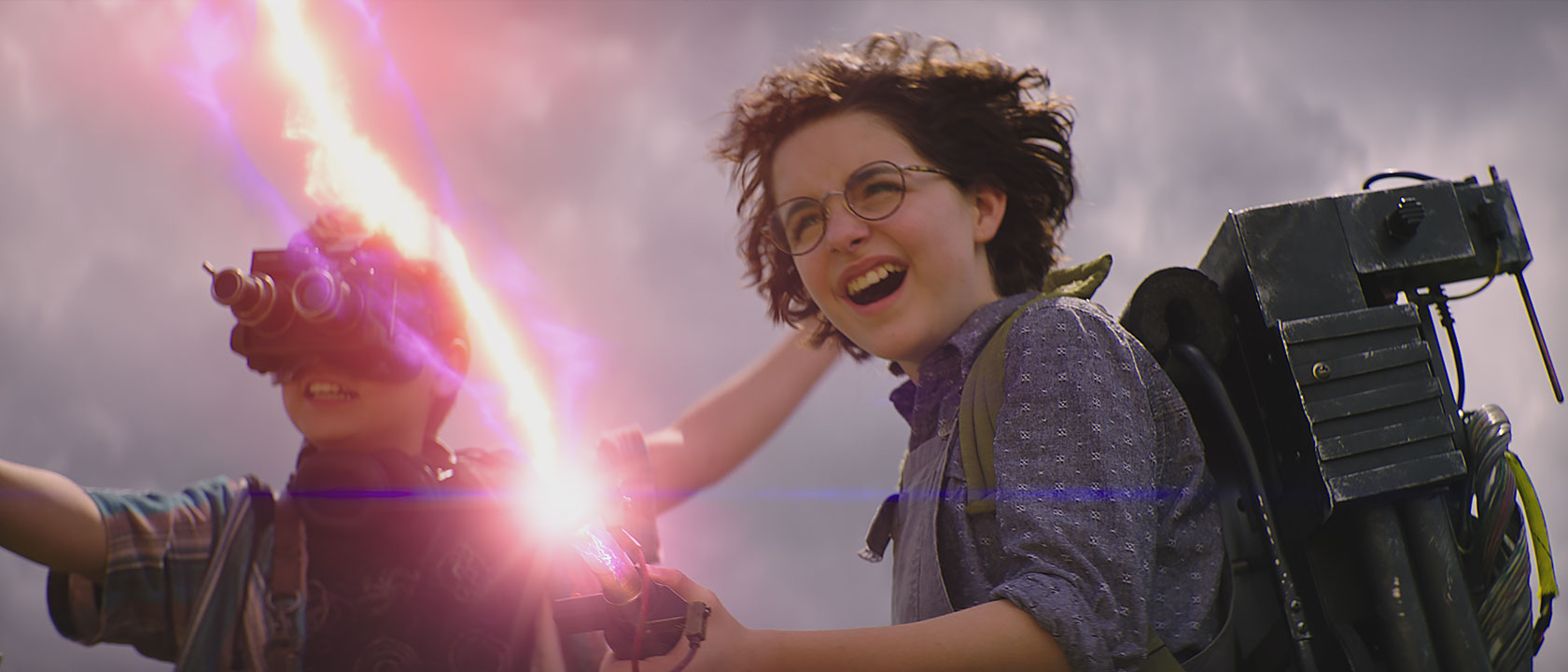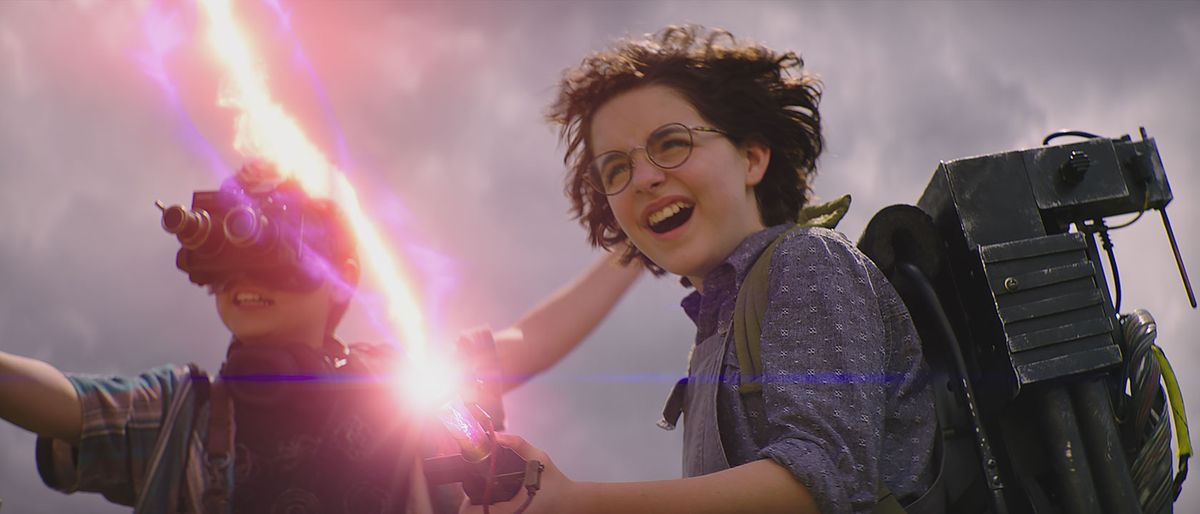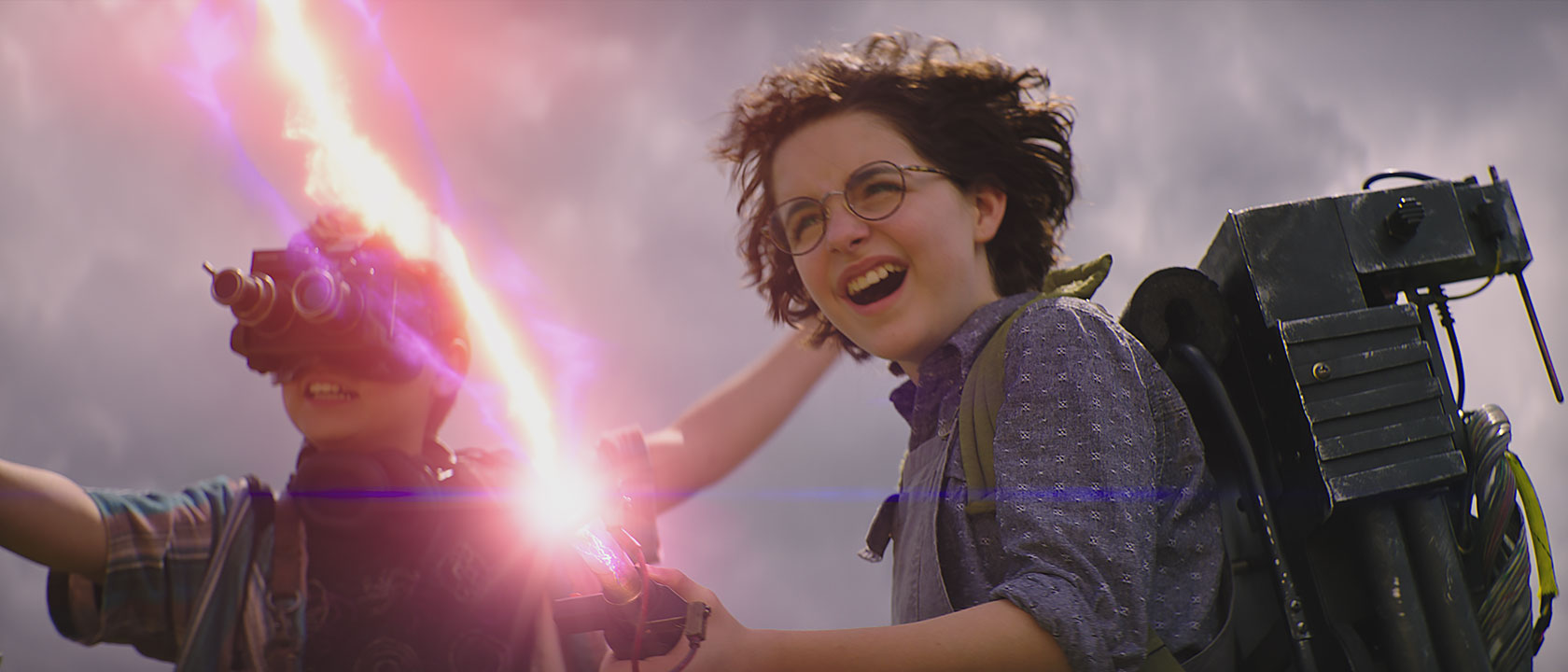

More ambitious projects – like Jason Reitman’s Ghostbusters: Afterlife – try to push the narrative forward, employing beloved elements from the past, but using them to create something fresh and new. Reitman understands the family business (his father Ivan directed the first two Ghostbusters movies), so many of his creative choices work, even with tonal shifts that stem from the different directorial voices of the familial filmmakers. Some, however, do not land, and Reitman’s biggest swings are sure to create divisive and heated conversations amongst fans of all generations. Who ya gonna call? A mediator.
Hollywood hates letting the past die. Nostalgia serves as inspiration fuel for the projects found on most studio slates, leading to new chapters in time-tested franchises like Halloween, Scream, Jackass, Jurassic Park, Indiana Jones and more. The laziest examples in this cycle trot out aging-yet-still-familiar faces, and then demands that they tap dance through a tired routine that screams, “Don’t you remember when you used to like this?”
Ghostbusters: Afterlife fully passes a baton to the next generation, and offers a star-making turn by McKenna Grace.
Ghostbusters: Afterlife does follow the recent trend of sequels connecting to older films on the timeline, thereby ignoring the existence of less-popular entries in the same series. After Alan Taylor’s Terminator: Genisys and David Gordon Green’s Halloween each announced their intentions to completely ignore such in-canon stinkers as Terminator: Salvation and Halloween 6: The Curse of Michael Myers, you could almost hear studio executives collectively questioning, “Wait, you can do that?” You can if the fans allow it, and I have a hunch Ghostbusters enthusiasts will embrace Reitman’s decision to branch directly off his father’s original Ghostbusters and its 1989 sequel, leaving Paul Feig’s 2016 reboot in Ecto-1’s exhaust fumes.
The story in Ghostbusters: Afterlife is driven by the existence of the original four members of the Ghostbusters team, with the New York-based events from the initial two films being moments in history that characters in this movie remember. After a hurried prologue that establishes our new location and hints at the film’s larger threat, screenwriter Gil Kenan settles us into the plot as cash-strapped single mom Callie (Carrie Coon) moves her snarky son Trevor (Finn Wolfhard) and brainy daughter Phoebe (McKenna Grace) to their grandfather’s dilapidated farmhouse in Oklahoma.
Very little is known about the reclusive old man who once occupied the home. Residents of the town referred to him as “The Dirt Farmer,” and Callie provides no additional information as her dad left her at a very young age. But as Phoebe explores both the farmhouse and her new town, she, her newfound companion Podcast (Logan Kim), and an inquisitive science teacher (Paul Rudd) start to connect dots between recent strange Oklahoma occurrences and the historic events of New York City.
One should know going into Ghostbusters: Afterlife that Reitman’s film is almost exclusively about these new characters and how they come to interact with classic elements of the franchise. We don’t get to see Ecto-1 racing through the streets of Manhattan. Instead, Trevor discovers it under a tarp in the garage, conducts minor repairs, then tears through a cornfield as the signature siren blares. Rudd’s teacher is the one who recognizes a vintage Ghost Trap, while Phoebe gets the proton packs up and running so she and Podcast can conduct target practice. It’s endearing to see these props back in play, and refreshing to see how Reitman uses them in drastically different fashion than his father did.
McKenna Grace gives the standout performance in this new bunch. Once you realize which O.G. Ghostbuster she is channeling, her precise mannerisms, calculated sense of humor, and smarter-than-most attitude plugs directly into the unique atmosphere of the first two movies. Grace is confident and funny, stubborn, and practical. If the franchise wanted to move forward with her in a leading role, I’d say we were in good hands.
When Ghostbusters: Afterlife uses the original actors, it stumbles instead of soars.
One of the worst kept secrets about Ghostbusters: Afterlife is that surviving cast members Dan Aykroyd, Bill Murray, Ernie Hudson, and Sigourney Weaver all return, and are playing their original roles. That, alone, makes Afterlife far more successful than Feig’s miscalculation, where he shoehorned the classic cast into uncomfortable and unfamiliar roles that were distracting, not endearing. But there’s no denying that when Reitman does employ the original cast members, it doesn’t land with the triumphant, celebratory note I was personally hoping to see. You won’t hear from me how Ray Stantz, Peter Venkman and Winston Zeddemore factor into the plot because of spoilers; all I’ll say on the matter is that their contributions to the overall story aren’t as emotional or significant as I hoped.
Additionally, Ghostbusters: Afterlife feels like it is painted into a corner by the reality of Harold Ramis’ death. As Egon Spengler and as a screenwriter, Ramis was a key contributor and powerful voice in the Ghostbusters franchise, and Afterlife has a chosen solution for how it honors his legacy. This will be a major talking point after the film has screened, and may be the dividing line between “loved it” or “hated it” for fans. I didn’t love it, but I definitely need to see it play out one more time to determine if I actually hated it, or if that’s too stern of a dismissal.
Ghostbusters: Afterlife does honor the spirit of the original two movies, so fans likely will appreciate Reitman’s efforts to resurrect the long-dormant franchise.
Behind the scenes, the story on Ghostbusters: Afterlife centers on a son attempting to live up to a major portion of his father’s professional legacy. If the son of the original Ghostbusters is going to try and make a Ghostbusters sequel, it damn well better be good. On screen, Ghostbusters: Afterlife flies highest when it’s drilling into the emotional elements of Egon’s estranged family: how they coped with his absence, and how they’re putting the pieces together the more that they learn important truths about him.
There’s actually enough story in the film to continue the grand tradition of Ghostbusters without returning the surviving titular team members, strange as that is to say. McKenna Grace makes the franchise her own, instead of borrowing a part in someone else’s game. Bustin’ might have felt better if the rest of the movie committed to that revolution, but for now, Ghostbusters: Afterlife is a sometimes rousing, sometimes amusing, and sometimes unbalanced continuation of a beloved franchise that Hollywood doesn’t want to see die.


